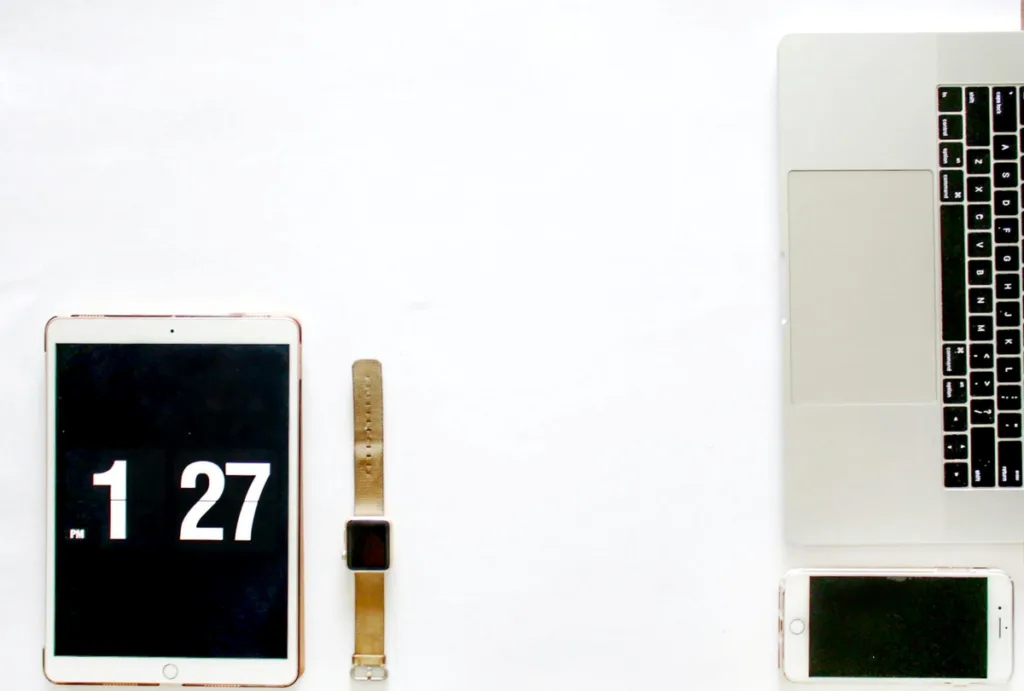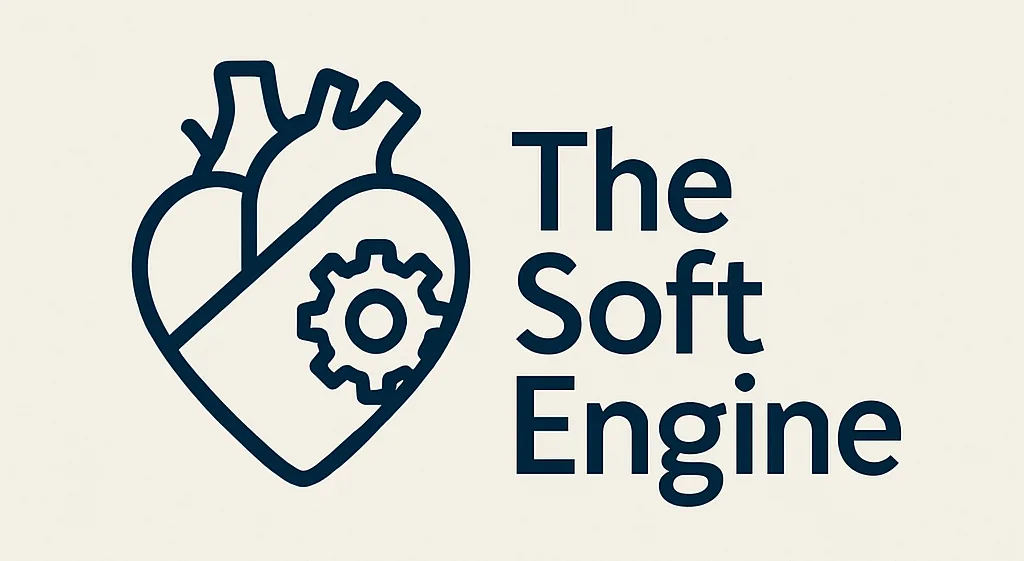Psychology of Productivity: Table of Contents
Here’s the paradox: most of us don’t struggle because we’re lazy. We struggle because the way our brains drive productivity isn’t designed for the modern world.
Notifications, fatigue, shifting goals, and “always-on” work environments pull against the very systems that help us focus.
That’s why understanding the psychology of productivity matters.
Let’s translate the research on motivation, attention, stress, and habits into practical, ethical strategies.
You’ll see how tools and systems can amplify the right levers, where “toxic productivity” crosses the line, and where the future (AI co-pilots, 4-day weeks) is already reshaping how we work.
Why Productivity Is Psychological (Not Just a To-Do List)
Most productivity advice jumps straight to hacks – the right app, the perfect schedule, the latest “system.”
Useful, sure. But the real drivers of productivity live deeper, in your psychology.
At its core, productivity runs on four levers:
- Motivation: whether the effort feels worth it.
- Attention: how well you can focus without splintering.
- Energy & Mood: the mental bandwidth you’ve got left after sleep and stress take their cut.
- Meaning — whether the work connects to your values or just feels like busywork.
Seen this way, setbacks stop looking like laziness. They’re clues. Maybe your expectancy is low, your focus is shot, your energy tank is empty, or the work feels pointless. The fix isn’t “dig deeper” — it’s redesigning the system so your brain wants to cooperate.
The Four Levers of Productivity
Motivation: The “Why” Behind Effort That Feels Worth It
In psychology, motivation is a mental equation your brain runs before you act:
Motivation = Expectancy × Value ÷ Friction
- Expectancy → Do I believe my effort will succeed?
- Value → Do I care about the outcome?
- Friction → What obstacles are in the way?
This expectancy-value model is one of the most studied frameworks in motivation and productivity psychology.
If expectancy or value is near zero, motivation collapses — no matter how important the task feels.
Example: Writing a report. You can raise expectancy by breaking it into two steps (“outline, then draft”), increase value by tying it to a promotion goal, and reduce friction by closing Slack and opening your notes. Adjusting any lever makes starting easier.
Intrinsic vs. Extrinsic Motivation
Motivations also come in different qualities, and that difference matters for long-term performance.
According to Self-Determination Theory, people thrive when three needs are met:
- Autonomy — freedom to choose how to work.
- Competence — a sense of building mastery.
- Relatedness — connection to others or a bigger purpose.
When these needs are supported, intrinsic motivation (working for growth, mastery, or meaning) is sustainable. Extrinsic motivation (bonuses, likes, gamified points) can help in bursts, but too much reliance can actually undermine drive.
Attention: Why Multitasking Doesn’t Work
Multitasking feels efficient, but decades of research show it’s an illusion. Each time you switch tasks, your brain pays a cognitive toll: slower performance, more mistakes, and reduced focus.
The APA calls this the “switching cost,” and it hits hardest with complex or creative work.
Still a little confusing?. Think of it this way: Your brain is like a desk. Every switch forces you to clear it off and set it up again. Even quick swaps waste energy – and sometimes you lose a page entirely.
Flow State: The Science of Deep Focus
Psychologist Mihaly Csíkszentmihályi described flow as the state of deep, effortless concentration where time fades.
Flow requires three things: clear goals, focus, and a balance between challenge and skill. Multitasking makes it nearly impossible.
To get into flow state, use:
- Time-boxing: schedule deep work blocks like meetings.
- Pomodoro technique: 25 minutes on, five off – a reliable inertia breaker.
- Single-tasking: best for accuracy-heavy or creative work.
- Attention rituals: cues like headphones or focus playlists to trigger concentration.
Energy and Mood: The Hidden Drivers of Output
Even perfect motivation and focus collapse if your body and mind are drained. Energy and mood set the bandwidth for everything else.
First, you’ve got happiness.
In a large Oxford study, call center workers who reported higher happiness were 13% more productive than their peers. Mood widens cognitive flexibility, helps with problem-solving, and sustains persistence through setbacks.
Then you’ve got recovery, or sleep.
Sleep is the original productivity app. Sleep deprivation impairs memory, judgment, and decision-making. Over time, chronic sleep debt compounds these deficits.
Stress works the same way: cortisol narrows your attention, useful for emergencies but terrible for creative or complex tasks.
To hack your energy and mood:
- Stick to a consistent sleep schedule.
- Work in ultradian cycles (~90 minutes on, short break).
- End your day with a shutdown ritual: tomorrow’s task written, devices away.
Treat rest and recovery as part of the system, not extras.
Meaning: The “Why” Behind the Work
Motivation, focus, and energy can carry you far. But without meaning, effort runs out of fuel. Meaning is what makes hard work feel worthwhile instead of hollow.
Research on job crafting shows that when people reshape tasks to align with autonomy and purpose, engagement rises.
Positive psychology reinforces this: Seligman’s PERMA model identifies meaning as one of the five pillars of flourishing.
In practice, meaning doesn’t mean every task feels inspiring. It means enough of your work connects to your values, growth, or contribution that you stay fueled.
Sometimes that’s reframing – linking a repetitive task to the bigger decision it informs. Sometimes it’s aligning – choosing projects that matter to you. And sometimes it’s subtracting – dropping the tasks that are just busywork.
Meaning turns productivity from short bursts into something you can sustain.

Psychology-Backed Ways to Beat Procrastination
We don’t put things off because we’re clueless about what needs doing.
Instead, we procrastinate because of what psychologists call the intention–behavior gap, that slippery space between wanting to act and actually acting.
The trick is removing the micro-struggles that live in that gap.
One of the most effective tools for this is the “implementation intention,” which turns vague goals into automated decisions.
By linking an action to a clear cue —
- “If it’s 9 a.m., then I open my draft.”
- “If I pour my coffee, then I review my top task.”
— You bypass hesitation. Each rule acts like a mental shortcut, reducing the need to negotiate with yourself in the moment.
Over time, this decision automation makes follow-through feel almost effortless.
Another powerful fix is starting smaller than you think you should. Instead of promising yourself you’ll “write the report,” commit only to opening the document and typing the first sentence.
These starter steps shrink the mental barrier to entry, and often, momentum takes care of the rest.
When you pair this with habit stacking (attaching a new behavior to something you already do daily, like reviewing notes right after checking email), you build a reliable chain of cues that naturally carries you forward.
The combination of cues, micro-steps, and stacking creates a system that doesn’t rely on bursts of motivation, but on structures that quietly get you moving.
Healthy vs. Toxic Productivity
Productivity feels good when it’s sustainable. But when performance rises while recovery, meaning, and relationships collapse, it tips into toxic territory.
The World Health Organization (WHO) defines burnout as exhaustion, cynicism, and reduced efficacy caused by chronic stress. In practice, it shows up as Sunday dread, mental fog, or the creeping sense that work is eating everything else.
Warning signs of toxic productivity:
- You measure your worth only by output.
- Recovery time feels “wasteful.”
- Personal relationships or health are consistently sacrificed for work.
The fix? Make it sustainable. That means:
- Setting hard stop times and digital boundaries.
- Auditing commitments and dropping low-value tasks.
- Anchoring work to personal or social meaning.
- Protecting recovery with non-work activities that restore energy.
Future Forward: The Psychology of Productivity (2025 and Beyond)
Motivation in an AI-Augmented World
Expectancy–value theory won’t vanish, but how people form expectancy will change.
When AI handles the “first draft” of work, the human role shifts toward editing, strategy, and oversight. That could raise motivation (less friction) or lower it, if people feel detached from outcomes.
Imagine you’re asked to write a 2,000-word market report. Pre-AI, you’d block hours for research, drafting, and formatting — a daunting lift, high friction.
With AI, you can generate a structured draft in minutes. Your expectancy goes up (“this is doable”), friction drops, and value rises because you can focus on insight instead of formatting.
But the flip side? If the AI draft feels generic and your edits are minimal, you may feel less ownership of the result.
In psychological terms, intrinsic motivation fades: the work no longer feels like yours.
Future research will explore how to design systems that preserve meaning and ownership, so humans stay motivated even as AI takes on the grind.
Attention and the Science of Cognitive Load
Attention research is moving past “multitasking is bad” into more precise models of cognitive load.
Expect breakthroughs in understanding how much attention different tasks really consume, and how “attention-aware” systems can help regulate focus without undermining autonomy.
Example: You’re deep in a coding sprint, and your AI assistant notices your cursor has been idle for five minutes while Slack notifications pile up.
Instead of bombarding you, it delays them until your ultradian cycle break. That preserves focus.
But if the system becomes too controlling, it risks crossing into “digital babysitter” territory. Future psychology will study how to strike that balance.
Energy, Stress, and the Neuroscience of Recovery
The next wave of productivity psychology is connecting output with affective neuroscience: how emotions, hormones, and brain states shape energy.
Expect more tools that sync work with natural energy rhythms instead of forcing uniform schedules.
Meaning and the Psychology of Work Identity
Work is no longer just a paycheck; it’s increasingly tied to identity and values.
As hybrid schedules spread and careers become more fluid, psychologists are studying how meaning shifts when “work” and “life” boundaries blur.
In a hybrid team, one designer finds meaning by shaping the look and feel of a product; another finds it by mentoring junior colleagues over Zoom.
Both are productive — but for different reasons. Future psychology will study how individuals craft meaning when roles are flexible, nonlinear, and less tied to place.
Ethics: The Psychology of Nudges and Autonomy
The biggest open question is how to design nudges that support behavior without undermining autonomy.
Productivity psychology is moving from “what makes people work harder?” to “what makes productivity sustainable, ethical, and human?”
Example: Your project app sends a nudge: “Time to wrap up and log off.” Supportive? For some, yes. But imagine if the same system also penalizes you for ignoring it.
Suddenly, the nudge feels like surveillance, not support. Future psychology will examine where the line sits between help and coercion.
FAQs
What is the psychology behind productivity?
The psychology of productivity is how motivation, focus, energy, and meaning interact to make tasks easier or harder to complete. When these four drivers align, work feels smoother and more sustainable.
Does happiness really boost productivity?
Yes. Research shows happier workers are about 13% more productive, largely because positive mood supports persistence and flexible thinking. This is sometimes called the “happy–productive effect.”
Is multitasking ever productive?
Rarely. Most complex tasks suffer when you switch, because task switching increases errors and slows focus. Simple chores (like folding laundry while listening to a podcast) are exceptions.
How do I stop procrastinating?
Psychologists suggest shrinking the task to two minutes, stacking it onto an existing habit, and using an if–then plan (e.g., “If it’s 9 a.m., then I open my draft”). These strategies lower friction and help automate action.
Conclusion: The Psychology of Productivity
Productivity isn’t about squeezing out more willpower or falling for common productivity myths. It’s about building systems that align motivation, focus, energy, and meaning so your brain can do its best work.
That means protecting attention from constant task switching, building habits that actually stick, and anchoring work to meaning instead of just output.
It also means noticing the hidden causes of low productivity — fatigue, scattered attention, or lack of purpose — before they spiral into burnout or toxic productivity.
The future will bring smarter AI tools and workplace policies that protect focus and recovery.
But the most important shift is personal: running your own productivity assessment and redesigning your environment so the right choices become the easy ones.
Start small: one focus block, one if–then plan, one better night’s sleep. Over time, those small levers compound. Your brain — and your productivity — will thank you.

